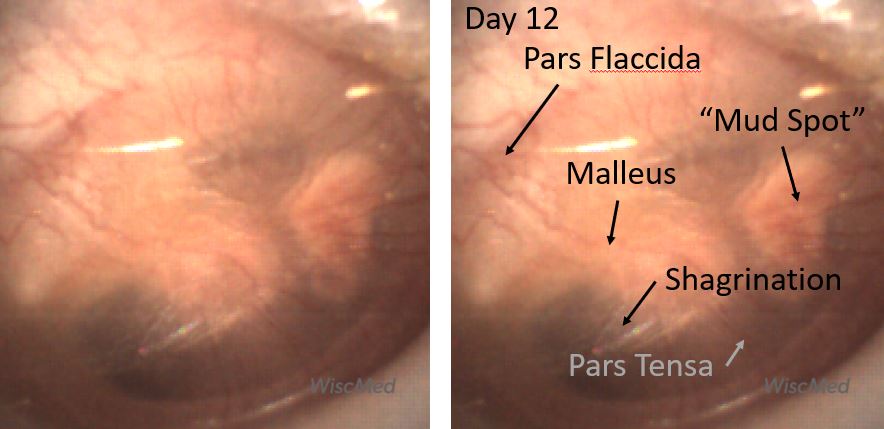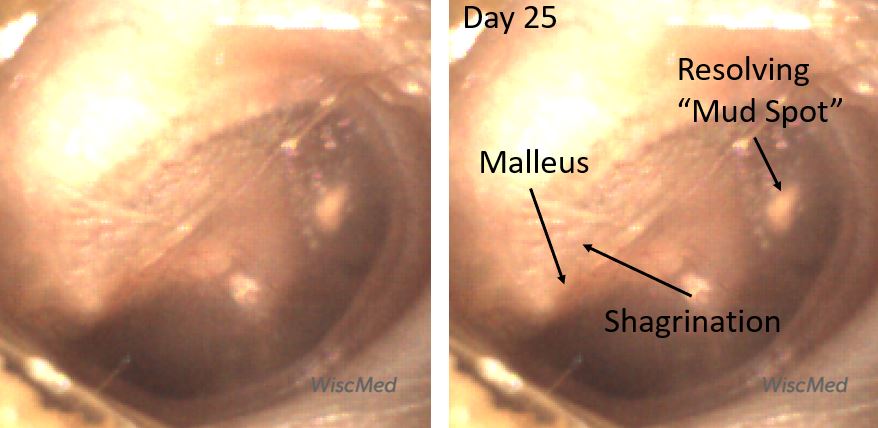
Mud Spots or Resolving Middle Ear Muco-Purulence (REMEMP)
An 18-month-old female presents for re-evaluation of her left ear. Twelve days prior the child was diagnosed with acute otitis media (AOM) and placed on antibiotics. The child’s symptoms improved immediately, and today the mother has no further concerns. The follow-up exam was done as an academic exercise to track the resolution of AOM. What abnormalities do you note on the image obtained of the left ear?
There are several abnormalities still present on the left ear tympanic membrane (TM). The malleus, while discernable, still does not appear as distinctly as in a normal ear. The pars flaccida portion of the TM still shows signs of mild bulging. There is subtle shagrination present. Most interesting, perhaps, is the presence of the “mud spot.” Mud spots are well described in Chapter 9 of Dr. Michael Poole’s excellent book, “Otitis: The Expert’s Diagnostic Guide.” Mud spots are often found in cases of resolving acute otitis media. They are typically seen from one to eight weeks after AOM and are located on the medial surface (middle ear surface) of the TM.

Day 12 post-AOM diagnosis and treatment
Mud spots are thought to be from the aggregation of inflammatory cells secondary to the resolving infection. The spots resolve with time as can be seen in the panels below. The mud spots appear to resolve more quickly if there is no middle ear effusion present. Dr. Poole has introduced the term Resolving Middle Ear Muco-Purulence (REMEMP) as a more academic term than mud spots. The following three panels show the tympanic membrane prior to the mud spot developing (day 9), the presence of the mud spot (day 12, this case), and resolving of the mud spot (day 25).

Day 9 post AOM diagnosis and treatment with developing mud spot

Day 12 post-AOM diagnosis with formed mud spot

Day 25 post-AOM diagnosis with resolving mud spot
Here is the complete video of the day 12 ear exam:
Complete exam video
Reference
“Otitis: The Expert’s Diagnostic Guide,” Dr. Michael Poole, Apple Books.







































































































































































































